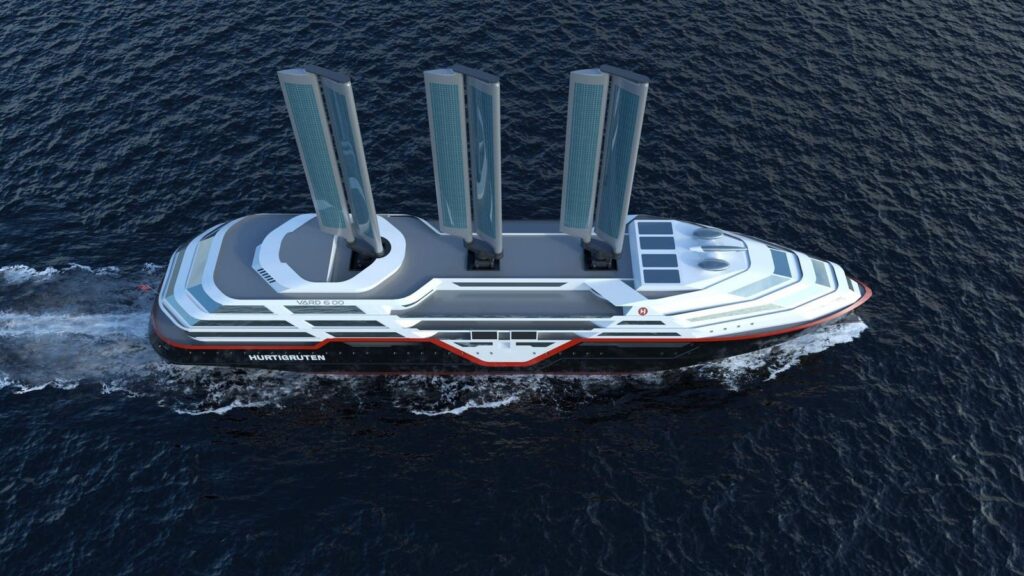
Shipping Goes Back To The Future – With Sails
In a bold move to reduce carbon emissions and mitigate the devastating impact of climate change, shipbuilders are reviving the age-old technology of sails. Yes, you read that right – sails! A technology that has been dormant for over a century is making a comeback in a bid to tackle the colossal issue of pollution.
Hurtigruten, a polar exploration company, is leading the charge by constructing a cruise ship designed specifically for Arctic operations. The vessel will harness wind power to achieve zero or near-zero emissions, which is essential considering the shipping industry’s staggering contribution to global CO2 emissions – an estimated 2.1-2.5% annually.
The International Maritime Organisation (IMO) has set an ambitious goal of reducing carbon emissions by at least 40% by 2030. To achieve this, they have encouraged the adoption of zero or near-zero emission technologies, which should account for 10% of energy used by international shipping by the end of the decade.
While it may seem like a regressive step to go back in time and re-embrace sails, innovative designs and materials are making this technology more viable than ever before. The IMO estimates that all new ships built after 2025 will be 30% more energy-efficient compared to those constructed ten years ago, thanks to advancements in existing machinery and the implementation of smart technologies.
Cargill and BAR Technologies have taken it a step further by fitting WindWings – massive wing sails measuring up to 37.5 meters in height – onto the deck of the Pyxis Ocean. In ideal sailing conditions during open sea voyages, this vessel achieved fuel savings of an impressive 11 tonnes per day.
The reintroduction of sails could have a significant impact on reducing emissions. Cargill and BAR Technologies’ collaboration is just one example of how the industry is working towards a more sustainable future.
It’s not just about tourism; large container ships are also getting in on the action. Alette Maersk, a Danish shipping company, has been operating its massive container ship Laura Maersk entirely with green methanol since 2023 and has even placed orders for eight larger carbon-neutral vessels that will run on this cleaner energy source.
Maersk’s commitment to reducing emissions is admirable, but it’s clear that more needs to be done. The shipping industry generates a staggering 940mn tonnes of CO2 annually, making every little bit count.
As we navigate the complexities of climate change and the urgent need for action, it’s heartening to see industries come together to find innovative solutions. The use of wind power is a crucial step in this journey, and I am excited to see what other developments emerge in the years to come.
Heather Farmbrough
Source: www.forbes.com


